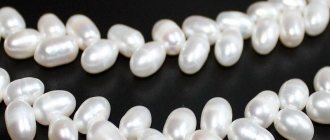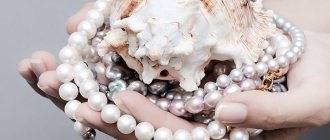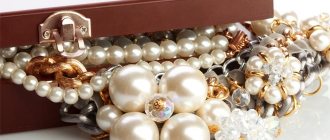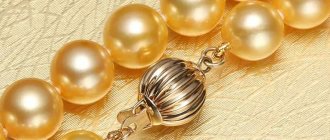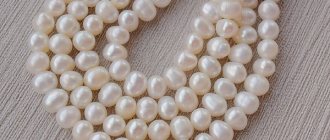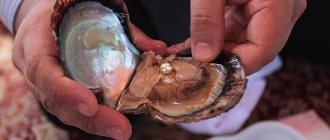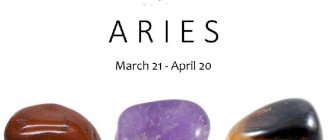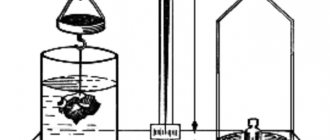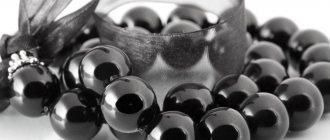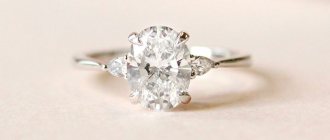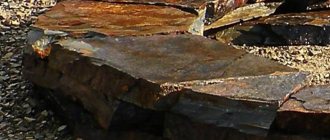| Stone type | Precious, semi-precious |
| Prevalence (Deposits) | Mexico, Panama, India, Tahiti, Sri Lanka, Japan, etc. |
| Varieties | Acoya, Baroque, Mabe, Mallorca, Oceanic, Freshwater, Tahiti, South Sea |
| Transparency | Translucent, opaque |
| Shine | Pearl |
| Mohs hardness scale | 3—4 |
| Chemical composition | CaCO3 |
| Color | White, blue, yellow, gold, pink, gray, black |
| Owner's color type | Spring, winter, autumn |
| Owner's temperament | Melancholic, Sanguine |
| Names | Andrey, Boris, Valentina, Galina, Eva, Evgeny, Evdokia, Inna, Irina, Claudia, Lilia, Margarita, Nadezhda, Oleg, Rosa, Sergey, Sofia, Elina, Yuliana |
| Zodiac sign | Libra, Cancer, Pisces |
| Date of Birth | from June 22 to July 22 from September 23 to October 23 from February 19 to March 20 |
| Chinese horoscope | Rabbit, horse, dog |
| Element | Water, Air |
| Planet | Neptune |
| Day of the week | Monday |
| Month | June, July, November, February |
| Season | Winter, summer, autumn |
| Numerology vibration | 2, 6, 7 |
| Chakra | Vishuddha, Sahasrara |
| What stones is it compatible with? | Aventurine, aquamarine, amethyst, turquoise, diamond, heliodor, heliotrope, garnet, emerald, moonstone, opal, rose quartz, ruby, chrysoprase, zircon, jasper |
| What stones is it not compatible with? | Beryl, malachite, sardonyx |
| Therapeutic effect (problems) | Blood pressure, vision, immunity, nervous disorders, memory and mental abilities |
| Therapeutic effect (on organs) | Organs of the gastrointestinal tract |
| Magic properties | Spiritual development, deception, strengthening relationships, black magic |
Natural pearls are classified as organogenic precious stones.
A mollusk is involved in the formation of the mineral. So, over the course of 10-12 years, a grain of sand that falls into a shell turns into a pearl. Stone is rare in nature, so man has learned to grow it on specially created farms. Growing cultured pearls solved two problems: to protect aquatic life from destruction and to satisfy the jewelry industry’s demand for the gem. Let's look at what cultured pearls are, how they are obtained and refined.
What it is
Cultured pearls are minerals created by man under special conditions. To understand what cultivated (grown) means, you need to know how a mineral is formed under natural conditions. To make a pearl, it is necessary that a grain of sand or other foreign object enters the cavity of the shell. It irritates the mantle, which begins to produce a special protein substance with a pearlescent sheen. The layer of mother-of-pearl gradually grows, and the pebble increases in size. The process of mineral formation takes 10-12 years.
The creation of special farms specializing in the production of natural pearls in artificially created conditions has made it possible to obtain selected minerals of various shades. The composition of the water and the type of shellfish are factors that determine the shade and intensity of the shine of the resulting stones. Both marine and freshwater mollusks are involved in the cultivation of minerals.
View of Akoya
Akoya cultured pearls are grown on the southern islands of Japan - Honshu and Kyushu. The most popular plantation location is Ago Bay. The mineral is expensive compared to others due to its beauty and quality. The stone shines and shimmers in different shades. Standard size is 10 mm. The larger the layer of mother-of-pearl, the more expensive the sample. China is also exporting the mineral today. The oysters that akoya create are part of the Pinctada group, and their name is Akoya-kai. Growth time is up to 4 years. Japanese pearl shades:
- pinkish;
- snow-white;
- cream.
Separate specimens are created in silver and green colors. The ideal shape for the species is a sphere.
Growing methods
Pearl culture was invented in China. People involved in the cultivation of mother-of-pearl minerals collected live river mollusks and placed clay balls in their mantle. The shells were immersed back into the water, and a few months later they were caught and full-fledged pearls were removed from the cavity.
Be sure to see: Properties and power of the mysterious jet
Today, water farms are common in China, Japan, Venezuela, and the Philippines. There are 2 technologies for obtaining stone: nuclear and non-nuclear.
Nuclear
The essence of the method is to use only sea mollusks. First, full-fledged adult aquatic inhabitants are looked for. Experts evaluate the mollusk's mantle, as well as the functioning of the gonad, the reproductive gland.
What the growing process looks like:
- The shell is opened with special equipment.
- A small incision is made in the mantle.
- The seed core and the ball are placed in the incision.
- Closed shells are placed in water.
Interesting! Over the course of a year, the thickness of the mother-of-pearl layer increases by 1 cm. Several years are enough to form a full-fledged stone.
Stones of warm countries
The southern sea expanses give white and golden pearls. These are rare and very valuable species. To create them, farmers take another mollusk - Pinctada maxima. White stones give silver-lipped, gold stones - gold-lipped. The procedure is similar to Akoya. But the special climate of the sea changes its appearance: color, shape, diameter. The precious material reaches large sizes - up to 20 mm. What is the advantage of this type:
- Warm water of the southern seas.
- Water purity.
- A large amount of nutritious plankton that contributes to the proper metabolism of shells.
- The large size of the mollusks is up to 30 cm.
- Possibility to place large kernels inside.
- Kernels can be placed at a certain age - one-year-old, that is, the growing period can be shortened.
Differences in appearance of southern creatures:
- matte shine;
- warm color tones;
- large pea diameters.
Another unique property is that southern pearls have a dense layer of mother-of-pearl coating with a special structural density.
Nuclear-free
This is a simpler cultivation technology. Both river and freshwater mollusks are used in the process of growing stone. An ordinary grain of sand is used as the basis for the future gem. Pearls take several years to mature. This method is suitable for obtaining small gems, the diameter of which does not exceed 8 mm.
Natural pearls and cultured ones... What is the difference and is there any at all??♂ Thank you very much for the ❤, we are very...
Published by Diamant Thursday, August 1, 2021
What affects external characteristics
The condition of the resulting pearls depends on the growing conditions. If freshwater stone is cultivated, the shells are placed on the bottom of lakes and rivers. Freshwater pearls take longer to mature. So, in the first 2 years, the thickness of the built-up mother-of-pearl layer is 2-3 mm. To obtain a mineral with a diameter of 8-9 mm, you need to wait 6 years. The chemical composition of water affects the shade of the gem. In fresh water you can get peach, white, purple and pink pearls. River stone rarely takes the shape of a ball. Freshwater cultured pearls are often teardrop-shaped and oval.
Growing pearls on farms located in the open sea produces large, perfectly round minerals. It is possible to cultivate large gems within 5-7 years. Under the influence of the chemical composition of sea water, a uniform shiny layer of mother-of-pearl is formed on each gem. However, the process of cultivating miners can be hampered by a sea storm and a sharp cold snap.
Proper care
Cultured pearls are sensitive to physical impact because they have low hardness values (no more than 4 on the Mohs scale). Therefore, it must be stored in a separate box. Wrapping it in cloth can reduce the chance of damage to the surface. You should also consider the following care features:
- contact with chemicals and cosmetics is prohibited;
- Avoid exposure to bright sun, strong wind and water;
- tobacco smoke negatively affects shine;
- During storage, it is important to maintain the level of humidity, since excessive dryness leads to the formation of cracks;
- dust should be wiped off periodically with a dry soft cloth.
If sweat or dirt gets in, clean with a mild soap solution. Do not leave wet items without natural drying. Freshwater pearls are believed to be more durable and easier to care for.
If you do not wipe the pearls from dust, their surface will be damaged and it will be impossible to fix it. At the same time, roughness appears and shine is lost. With more serious damage, microcracks may appear and the strength of the stone may decrease.
Refinement of cultured pearls
Masters practice several methods of refining minerals grown on pearl farms:
- Secret technology for enhancing shine: pearls are soaked in a special composition, including a complex of mineral salts and methyl alcohol. The shine is pronounced, but this effect lasts up to 6-12 months. Then the mineral takes on its original appearance, which is the disadvantage of the technology.
- Dyeing: This beautification technique is applied to the popular Akoya variety. This type of pearl is white, and dyeing with special compounds allows you to achieve a pinkish tint.
- Radiation exposure: When exposed to radiation, pearls with a large amount of manganese in their composition change color.
- Filling cracks and pores: Most pearls have irregularities (chips, pores, cracks). To correct defects, epoxy resins and polymer compounds are used.
The more you have to work on refining the pearls, the cheaper such a stone will cost.
Would you buy jewelry with cultured pearls?
Not really
Black stone
Natural pearls are a fabulous creation of nature. It's difficult to repeat. There are many types of pearl beads. The most unusual, according to many, is black. He's perfect. It does not require special processing or finishing. The value of the mineral is high. The pearls are clean and smoothly polished. Many people want to fake a miracle, since the mineral is grown in Tahiti, and it is difficult to get it.
Precious balls play in the rays of the sun, giving a metallic shine that other species do not have. In reality, the color of pearls is not black, but gray. Black also has other rich shades:
- red;
- green;
- blue;
- eggplant.
For counterfeiting, a white stone is used. Painting is carried out in special containers. That is why you should know where to buy real jewelry, and not become the owner of a fake.
Assessment methods
The quality of pearls is assessed according to the following criteria:
- weight;
- shine;
- color;
- form;
- size;
- characteristics of the mother-of-pearl layer;
- surface.
Be sure to check out: Features, properties and types of baroque pearls
NATURAL AND CULTURED PEARLSNatural (not cultured) pearls These are any type of pearls formed...
Published by Maysaku Monday, April 7, 2014
The unit for estimating the mass of a stone is considered to be a pearl grain. 1 grain = 50 mg or 0.25 carats. The greater the mass, the higher the value.
Interesting! The intensity of the mineral's shine depends on the number of layers of mother-of-pearl and their thickness. If the stone has many layers, then its shine will be pronounced. The X-ray method is used to assess the thickness of nacre. The diameter of the stones is another important evaluation criterion. The sizes of freshwater minerals start from 3 mm, sea minerals – from 5 mm. The sphere is the standard form of the gem. The more the shape of the stone differs from the ideal, the lower its value.
Pearls are found in jewelry in a variety of shades, from snow-white to black. Jewelry that has received a beautiful shade without refining is highly valued.
Despite the fact that it is not possible to grow pearls with an ideal surface, stones with a minimum of defects are highly valued in jewelry.
What form does it come in?
Material created with the help of humans is usually divided according to several criteria, including shape. The following varieties are distinguished:
- Sphere - beads have the ideal shape of a sphere, they are the most common and in demand.
- Hemisphere - pearls are slightly flat and oblong. They are actively used in jewelry; in a beautiful frame they look no worse than a round one.
- Rice is an oval-shaped pearl with a wide central part and narrowed edges.
- A drop is a touching form of a tear and comes in different lengths. Pearls of this shape look especially beautiful in pendants and earrings.
- Baroque is almost complete abstraction. This material is the most affordable. With the exception of individual specimens of a completely unique shape, suitable for creating designer jewelry.
- Semi-baroque - respectively, pearls with an asymmetrical shape, similar to the one described above.
Also interesting shape options are button, blister and beads. Button pearls look like small buttons, completely flat. Blisters are formed not in the mantle of the oyster, but in the inner surface of the valve, which leads to the absence of a layer of nacre at the attachment site. Beads are the smallest pearls up to 2 mm, resembling ordinary beads, often round or oval.
Magical and healing qualities
Pearl is a female talisman. In ancient times, pearls personified spiritual purity, innocence and devoted love. Jewelry with sea gems was given as a sign of recognition of sincere feelings. There was also an opinion that pearls symbolize tears, and therefore attract sadness and loneliness into a woman’s life.
Today the pearl is regarded as a talisman of family happiness. For married women, jewelry helps maintain mutual understanding and devotion in the family. The gem favors lonely girls in search of a soul mate.
Pearl is a mineral that will help a person establish relationships with others and become pleasant in communication. Attracts an aura of friendship and mutual support. Pearls favor people who dream of developing entrepreneurial talent.
From the point of view of zodiac compatibility, the energy of the gem is suitable for representatives of the element of Water. It is better for fire signs to refrain from wearing jewelry with pearls.
The stone is endowed with powerful healing energy, so it helps a person get rid of numerous ailments. Pearls heal both soul and body. Talismans with the mineral are suitable for people suffering from kidney and liver diseases. The energy of the stone perfectly calms the nervous system, helping to get rid of phobias and obsessions.
There is a belief that pearls can warn their owner about health problems. If jewelry becomes dull and loses its luster for no apparent reason, this indicates the initial stages of cancer processes in the human body.
What is the difference between artificial and cultured pearls
Cultured stone is mistakenly called artificial. The reason for the confusion is that artificial conditions are created for the cultivation of pearls. In fact, cultured pearls are natural, since the process of their formation is impossible without the mollusk and its usual habitat. This is the key difference between grown stone and imitation stone.
The synthetic gem is produced in an industrial environment. The essence of producing a copy of the mineral is to use pearl essences, including gelatin mass. It is then painted with a mother-of-pearl composition and poured into special spherical shapes. After the mass hardens, the resulting balls are hollow, much like real pearls.
Interesting! There is another way to make imitations, which is to use a glass base for stones. The glass is formed into balls, onto which a thick layer of pearl essence is then applied. Strength is ensured by the use of compounds enriched with formaldehyde, alum, and mineral salts. The cheapest replicas of pearls are made from plastic mass. Pearlescent paint is applied to the finished balls.
Treatment
Processing is necessary in order to give the pearl a presentable appearance before sale. It involves a number of influences on the material.
- Bleaching. The procedure is used to give the beads an even color or to adjust the color towards lighter tones.
- Coloring . This technology allows you to “touch” the color of the jewelry to the desired shade. It is considered harmless to the structure of the pearl.
- Filing or sanding. It is used when there is a need to make the surface of the jewelry smooth. Previously, polishing was carried out using diamond. Nowadays they use white coral powder or alabaster. Increasingly, direct intervention is being replaced by chemical treatment.
- Irradiation is a procedure for coloring the core of a pearl. This is done using silver nitrate and ultraviolet irradiation.
- Polishing . Used in cases where the pearl becomes dull. Most often this occurs through direct interaction with the human body or from improper use.
When interfering with the structure of a pearl, it is impossible to predict the consequences. The result will depend on the conditions in which the particular jewelry was grown.
How to spot a fake
In most cases, an artificial mineral is sold at the price of a real one, which is a deception for the jewelry buyer.
How to distinguish a genuine gem from an artificial one:
- The surface of natural stone cannot be perfectly smooth. A small number of dents are acceptable.
- Beads made from a genuine gem cannot consist of ideally shaped pearls.
- If you throw a natural bead on a hard surface, the product will spring back slightly, since natural pearls are characterized by a layered structure. A fake does not have such properties.
- If you rub a natural stone on a thick fabric, the shade will not change.
- The natural gem almost does not heat up from the warmth of human hands, remaining cool.
To be sure of the authenticity of the jewelry you are purchasing, choose it from jewelry boutiques with an excellent reputation.
How to care for products made from non-natural pearls
Many people are interested in the question of how to clean products made from non-natural minerals at home so that they remain beautiful and shiny for as long as possible. Caring for beads, necklaces, bracelets, and rings with imitation minerals requires following some recommendations:
- Products should be thoroughly wiped with a soft cloth or napkins.
- Do not immerse jewelry in water or solutions containing chemicals; to clean heavy stains, it is better to use a damp cloth.
- You cannot swim in the products, take a shower or bath, or visit a swimming pool, bathhouse or sauna.
- Non-natural beads cannot be treated with steam or ultrasound.
- It is worth remembering that fake pearls, just like natural ones, do not tolerate the effects of styling varnishes, perfumes, deodorants and various creams.
- It is not recommended to allow jewelry to come into contact with alcohol, vinegar, chlorine and other aggressive substances.
- Products made from unnatural Burmitz grain prefer to be stored in special bags for jewelry or in a box with soft, preferably velvet, upholstery.
Main conclusions
- Pearl cultivation makes it possible to satisfy the jewelry industry's need for selected stones of natural origin. If the mineral were mined in natural conditions, a huge number of living mollusks would have to be destroyed.
- The gem is grown on special farms created in fresh water bodies and seas. River (lake) pearls differ in appearance from sea pearls, since the characteristics of the mineral are influenced by the chemical composition of the water and natural conditions.
- Refining a stone allows you to hide defects, without which no natural gem can be imagined.
- When assessing the quality of pearls, the shape, shade, luster, and thickness of the nacre are determined.
- Cultured and cultured pearls are not the same thing. Synthetic stone is manufactured in industrial conditions. Both types of mineral have different physical properties, so cultured pearls are easy to distinguish from artificial ones.
Defects - which are acceptable and which are not
The pearl grows inside a living shellfish, so there is no guarantee that it will end up free of any defects. Each has certain characteristics. The question is whether they are acceptable or not. It all depends on the type of defects, quantity and degree of visibility.
It is believed that the less noticeable the flaws, the higher the material can be rated. On the other hand, beads with unique shapes, colors, irregularities and even spots are individual. There is always a demand for them, so the price of such a product is never too low.

